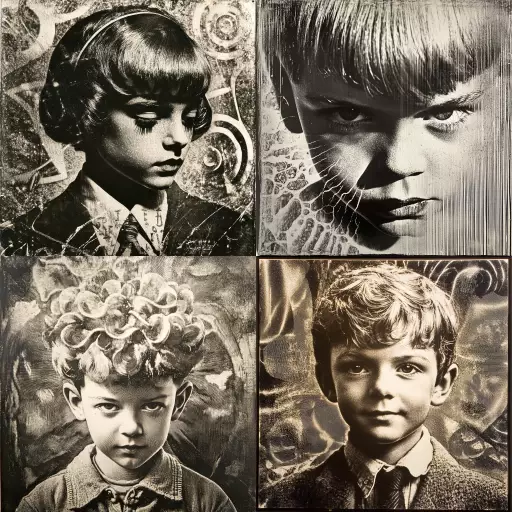Explore the Best AI Image Gallery

Quantum Creativity: Unlocking New Frontiers in the Arts
The realm of creativity has always been driven by innovation and the exploration of uncharted territories. Today, a new frontier is emerging—quantum computing—with the potential to reshape artistic expression and usher in an era of unprecedented creative possibilities. While still in its nascent stages, quantum computings unique capabilities are already sparking excitement among artists, designers, and technologists alike.
Quantum computers leverage the principles of quantum mechanics to perform calculations at speeds unimaginable for classical computers. This allows them to tackle complex problems that were previously intractable, opening doors to innovative applications across diverse fields, including art and design.
Potential Applications in the Creative Industry
- Generative Art: Quantum algorithms can generate intricate and visually stunning artwork based on complex mathematical models or user-defined parameters. Imagine algorithms that create unique paintings, sculptures, or music compositions inspired by quantum phenomena or abstract concepts.
- Interactive Experiences: Quantum computers can power highly immersive and interactive art installations. Users could interact with quantum simulations, influencing the evolution of visuals, soundscapes, or narratives in real time, blurring the lines between observer and participant.
- Personalized Creative Tools: Imagine AI-powered design tools that leverage quantum computing to understand individual creative styles and preferences. These tools could assist artists in generating ideas, refining designs, or exploring new artistic expressions tailored to their unique vision.
- Novel Material Design: Quantum simulations can help designers create innovative materials with unique properties for artistic applications. Imagine sculptures crafted from self-healing materials or fabrics that change color based on environmental factors.
Ethical Considerations
As with any powerful technology, quantum computing raises ethical considerations that must be carefully addressed in the creative industry. Some key concerns include:
- Bias and Representation: Quantum algorithms are trained on data, which can reflect existing societal biases. Its crucial to ensure that creative outputs generated by quantum systems are diverse, inclusive, and representative of different cultures and perspectives.
- Ownership and Authorship: When AI systems contribute to the creation of art, questions arise regarding ownership and authorship. Establishing clear guidelines for intellectual property rights in a quantum-powered creative landscape is essential.
- Accessibility and Equity: Quantum computing resources can be expensive and require specialized expertise. Its important to ensure equitable access to these technologies so that all artists and creators have the opportunity to benefit from their potential.
Future Trends
The intersection of quantum computing and creativity is a rapidly evolving field with immense potential for future advancements:
- Quantum-Enhanced AI: Quantum algorithms can enhance the capabilities of AI systems used in creative applications, enabling more sophisticated artistic generation, personalized experiences, and deeper understanding of human creativity.
- Hybrid Creative Processes: We can expect to see hybrid approaches where artists collaborate with quantum computers, leveraging the strengths of both human imagination and machine intelligence.
- Quantum-Inspired Art Forms: Quantum phenomena themselves may inspire new artistic expressions, with artists exploring concepts like superposition, entanglement, and wave-particle duality through innovative mediums and installations.
The dawn of quantum computing marks a pivotal moment in the history of creativity. As this technology continues to develop, it will undoubtedly reshape the creative industry, empowering artists to explore uncharted territories, push boundaries, and redefine the very essence of artistic expression.